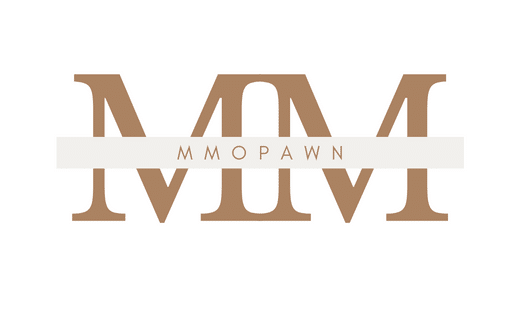Smart fabrics, also known as smart textiles or e-textiles, have been a game-changer for the UK’s health monitoring systems. These innovative materials are laced with digital components such as sensors or conductive threads that can track health metrics, including heart rate and body temperature. In this article, we delve into how smart fabrics are being used in the UK’s health monitoring systems.
What are Smart Fabrics?
Before we dive deep into the applications of smart fabrics in health monitoring systems, let’s first understand what these innovative materials are. Smart fabrics are textiles that have been designed and manufactured to include technologies that provide added value to the wearer. These could be in the form of sensors, connectivity modules, and even tiny computers embedded into the fabric itself.
A lire aussi : How Can Digital Mapping of Historical Battlefields Enhance UK’s Educational Tourism?
The UK has been pioneering in this field, with various research centres and companies leading the way in developing smart fabrics that can monitor a range of health metrics. Whether it’s tracking heart rate, body temperature or even stress levels, these fabrics offer a wealth of possibilities in the realm of health monitoring.
Tracking Physical Activities
One of the primary applications of smart fabrics in health monitoring systems in the UK is tracking physical activities. For instance, performance-tracking shirts are equipped with an array of sensors that can monitor heart rate, body temperature, and even muscle activity. These shirts provide real-time data, allowing wearers and their healthcare providers to make informed decisions about their activity levels and overall health.
A lire également : What Is the Future of Liver Disease Treatment with Organ-on-a-chip Technology?
Sports companies are also leveraging smart fabrics to provide accurate data to athletes about their performance. This information, delivered in real-time, enables athletes to fine-tune their training and recovery plans. In this way, smart fabrics are not just being used in clinical settings, but also in the realm of personal fitness and professional sports.
Patient Monitoring in Healthcare Settings
Another key application area for smart fabrics in the UK is in healthcare settings, where patient monitoring is crucial. For instance, hospitals are now employing sensor-laden bed sheets and patient gowns to continuously monitor vital signs.
These smart textiles not only reduce the need for invasive and uncomfortable procedures, but they also enable doctors and nurses to monitor patients remotely. Thus, smart fabrics are revolutionizing patient care in the UK, making it more personalised and efficient.
Wearable Tech for Senior Citizens
Smart fabrics are also emerging as a promising solution for health monitoring among the elderly. Companies in the UK are developing wearable tech such as smart socks and wristbands that can monitor a range of health metrics, from heart rate and blood pressure to sleep patterns.
These pieces of wearable tech, powered by smart fabrics, provide continuous health monitoring, which is particularly valuable for elderly individuals who may live alone or have chronic health conditions. These smart textiles provide real-time data, alerting caregivers or medical professionals if there are any significant changes that might indicate a health emergency.
Health and Wellness Insights
Finally, smart fabrics are being used to provide health and wellness insights to individuals, helping them lead healthier lives. For example, a sleep tracker embedded in a smart pillow or mattress can provide insights into sleep patterns, helping the user to make lifestyle changes for better sleep.
Smart fabrics equipped with stress sensors can provide feedback on stress levels throughout the day, helping individuals manage their mental health. Thus, through these innovative applications, smart fabrics are not only transforming health monitoring systems in the UK but are also empowering individuals to take charge of their health and wellness.
In summary, smart fabrics are revolutionizing health monitoring systems in the UK, with their applications ranging from tracking physical activities and patient monitoring in healthcare settings to providing health and wellness insights. With continuous advancements in this field, the potential for smart fabrics in health monitoring is enormous, promising a future where healthcare is more personalised, efficient, and patient-friendly.
Integration of Smart Fabrics and AI
The convergence of smart fabrics and artificial intelligence (AI) in the UK’s health monitoring systems is another significant development. AI algorithms coupled with these e-textiles are capable of processing the massive amounts of data collected by the embedded sensors. These AI-enabled smart fabrics are being used to predict potential health risks and provide proactive alerts.
For example, smart fabrics can be integrated with AI algorithms to identify patterns in heart rates or body temperatures that might indicate a potential risk of a cardiac event. By identifying these patterns, the smart fabric can send an alert to the wearer and their healthcare provider, potentially saving lives.
AI is also being used to calibrate the data collected by the smart fabrics. For instance, the heart rate readings from a smart shirt can be adjusted based on factors like the wearer’s age, weight, and fitness level. This ensures that the data provided by the smart fabrics is not only accurate but also personalised.
Furthermore, AI can help in the early detection of diseases. By tracking changes in body temperature, heart rate, or muscle activity, AI algorithms can identify patterns that might indicate the onset of conditions like Parkinson’s disease or diabetes. This allows for early intervention and more effective treatment, thus, the combination of smart fabrics and AI is potentially transformative for the UK’s health monitoring systems.
Rehabilitation and Physiotherapy Applications
Besides their use in monitoring health metrics, smart fabrics are also being used in the UK for rehabilitation and physiotherapy. Smart knee sleeves and elbow pads, for example, can monitor the range of motion and provide feedback to physiotherapists about a patient’s progress.
In some cases, these smart fabrics can also provide gentle electrical stimulation, helping to strengthen muscles and reduce pain. This is particularly beneficial for patients recovering from injuries or surgeries, as it can help speed up the recovery process.
Moreover, smart fabrics can play a critical role in injury prevention as well. For instance, smart socks equipped with pressure sensors can monitor the wearer’s gait, identifying any abnormalities that might increase the risk of injuries. This can be particularly useful for athletes, helping them to prevent injuries and extend their careers.
Conclusion
The growing incorporation of smart fabrics into the UK’s health monitoring systems is revolutionising healthcare delivery in the country. From tracking physical activities and monitoring patients in clinical settings to offering valuable insights into personal health and wellness, these innovative materials are transforming the way healthcare is provided and perceived.
The potential of smart fabrics extends far beyond simple health monitoring. Integrated with AI, they can offer proactive alerts and personalised data, making healthcare more predictive and preventive. Moreover, their application in rehabilitation and physiotherapy can significantly enhance patient recovery and prevent injuries.
As more research is conducted and technology continues to advance, the role of smart fabrics in the UK’s health monitoring systems is set to expand even further. The benefits offered by these materials – from improved health monitoring and disease prevention to enhanced patient care and recovery – are substantial, promising a future where healthcare is not only more efficient and personalised but also more accessible and affordable. This heralds a new era in healthcare, powered by the innovative capabilities of smart fabrics.






